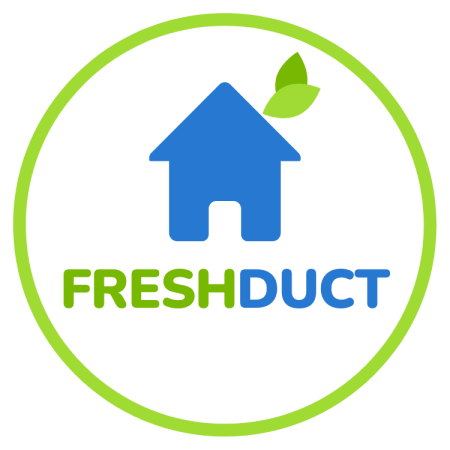Mold in our homes is more common than we’d like to admit, especially in damp or humid areas like Melbourne. This pesky problem isn’t just an eyesore; it’s a health hazard that can cause a variety of issues if left unchecked. Mold thrives in warm, moist environments, making Melbourne homes particularly susceptible after the wet seasons. Its presence can lead to respiratory problems and aggravate allergies, making mold remediation a necessary step for ensuring our homes remain safe and healthy.
Tackling mold isn’t just about getting rid of the visible signs. Effective mold remediation involves addressing the underlying causes to prevent future outbreaks. Whether it’s a hidden leak or poor ventilation, understanding how mold occurs and spreads is key to keeping it under control. By adopting the right processes and techniques, homeowners can protect their families and maintain a healthy living environment.
Understanding Mold Growth
Recognising the factors leading to mold growth is the first step to keeping your home mold-free. First, mold needs moisture to thrive. This means areas with water leaks, condensation, or persistently high humidity are prime locations. Common household spots include bathrooms, kitchens, basements, and even inside walls where plumbing might have small leaks. Sometimes, it’s not immediately obvious where mold might be lurking, which is why periodic inspection is a good habit to cultivate.
Aside from moisture, mold also requires a food source, usually organic material. This can be anything from wood and fabric to insulation and paper. Unfortunately, our homes provide plenty of suitable materials, especially in hidden corners and neglected storage spots.
– Check for these key conditions to identify mold growth:
– Persistent dampness or water stains
– Odd, musty smells in certain areas
– Discoloration or spots on walls and ceilings
By understanding these contributing factors, homeowners can start implementing preventative measures and address potential problems before they require costly interventions. Regularly checking for leaks, improving ventilation, and using dehumidifiers can all help reduce the risk of mold becoming a fixture in your home. Taking these proactive steps can make a big difference, giving you peace of mind and a healthier living space.
Steps for Effective Mold Remediation
Taking charge of mold problems starts with proper identification. To do this, keep an eye out for water stains, discoloration on walls or ceilings, and that unmistakable musty smell. An early spot can save a lot of hassle and expense down the track. Once you’ve pinpointed the mold, it’s important to understand the steps involved in effective removal.
The process of mold removal varies depending on the extent of the problem. Smaller areas might only require cleaning with specialized solutions, followed by thorough drying. For more significant problems, you might need to remove affected materials like drywall or carpets altogether. Safety precautions, such as wearing masks and gloves, are important to protect yourself during this process.
To prevent mold from returning, address the root causes. Fixing leaks, ensuring proper ventilation, and maintaining lower humidity levels can be game changers. Using a dehumidifier during humid months or sealing areas prone to moisture can help manage the environment indoors, reducing the likelihood of mold reappearing.
Benefits of Professional Mold Remediation
While tackling minor mold problems might seem manageable, professional remediation offers distinct advantages. Experts possess the skills and equipment needed to eliminate mold completely. They can reach areas that are hard to access, ensuring every last spore is dealt with.
Professionals follow a systematic approach that guarantees mold is not just cleaned but also the underlying issues are addressed. The use of high-tech tools, such as moisture meters and air purifiers, ensures that remediation is thorough and preventive measures are put in place. The experience and knowledge they bring mean they won’t miss hidden mold spots.
One major advantage is the peace of mind that comes from knowing the job’s been done correctly. Rather than worrying about whether you’ve tackled everything, relying on experts frees you up to focus on more enjoyable pursuits, confident that your home is safe and mold-free.
Maintaining a Mold-Free Home
Moving forward, keeping your home free of mold requires consistent maintenance. Regular inspections are a simple yet effective way to catch problems early. Make a habit of checking areas that are often damp or where mold has appeared before.
Controlling the humidity inside your home is key. Keep indoor humidity below 60% where possible, using a hygrometer to monitor levels. In problem areas, consider installing exhaust fans or dehumidifiers to regulate the air. Also, ensure that your home is adequately ventilated — opening windows when weather permits and keeping internal doors open to foster circulation.
– Quick tips for a mold-free home:
– Fix leaks promptly, whether they’re from pipes, roofs, or windows.
– Clean and repair gutters regularly to prevent water accumulation.
– Dry wet areas immediately, especially after storms or spills.
– Keep plants indoors to a minimum, as they can increase humidity.
By maintaining these habits, you can safeguard your home against mold growth. These steps, when implemented consistently, will help retain a comfortable and healthy living space, free from the worries that mold can bring.
Regular maintenance is crucial for keeping your home free of mold and its associated health risks. By addressing issues early and ensuring proper humidity control, you create a safer living environment. If you’re ready to secure the full benefits of professional help, explore our mold remediation services. At Fresh Duct, we have the expertise to handle even the toughest mold problems, ensuring thorough elimination and prevention strategies that bring comfort and peace of mind.
